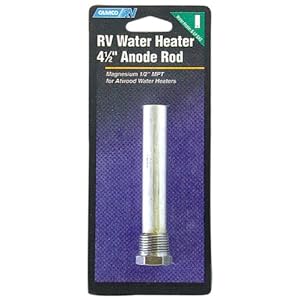yea i wasnt trying to rain on anyones parade at all. i just cant understand why it should be working... as it does appear to be from several peoples reports. i would assume that the base of most elements would be mild steel plated with something like chromium, or possibly stainless.
It works only when there is an electrical connection between the Mg and Fe in the element. If you look up the standard reduction potentials of those two metals, you'll find that Mg has a far more negative reduction potential. Therefore when electrically connected to the Fe in your element, the 2 or 3 electrons (depending on whether you're oxidizing to the +2 or +3 state) that the Fe would normally lose in the 'rusting' process are replaced by 2 from the magnesium. Essentially what this is doing is instead of the Fe acting as the anode, it becomes the cathode when connected to Mg due to the difference in their standard reduction potentials.
Sorry if this is a bit too much - I'm a chemist... but in a nutshell - electrically connected = will work.

























![Craft A Brew - Safale BE-256 Yeast - Fermentis - Belgian Ale Dry Yeast - For Belgian & Strong Ales - Ingredients for Home Brewing - Beer Making Supplies - [3 Pack]](https://m.media-amazon.com/images/I/51bcKEwQmWL._SL500_.jpg)



































